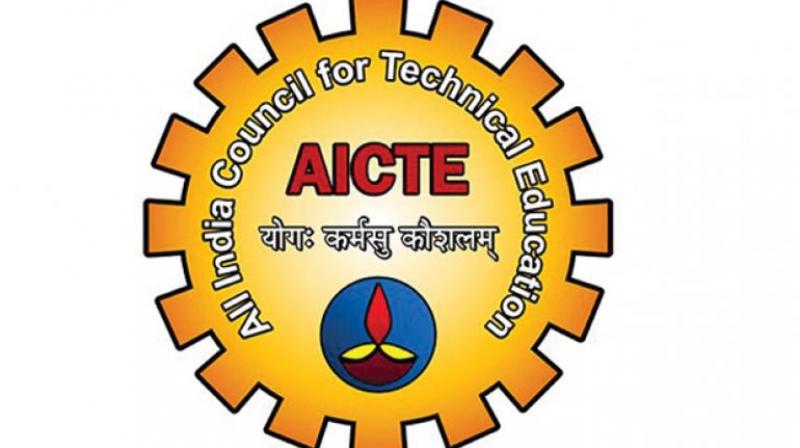What ails technical education?

A mushrooming of engineering colleges in India in the last three decades has created a peculiar situation posing several challenges to administrators and
planners. What began as a trickle in the 1980s and after, with blessings from union and state governments, soon became a torrent.
The politicians, a greedy lot with an eye on making a fast buck, entered the field by starting many institutions in urban and rural areas.
They sensed the demand from the youth completing the higher secondary (Plus two course). No doubt, these colleges met the aspirations of succeeding generations to a large extent in graduating with an engineering degree.
But the scenario brought to light the pathetic lack of elementary infrastructure facilities in the campuses - laboratories, workshops, libraries etc. The dearth of qualified faculty made matters worse. Obviously, quality of education in such a milieu left much to be desired.
The All Council for Technical Education (AICTE), a statutory body under the Union Government's Ministry of Human Resource Development (MHRD) to regulate and monitor the functioning of these institutions has met with only a limited success. Successive heads of AICTE have been mouthing pious platitudes regarding the toning up of technical education. The current AICTE chairman, Mr.Sahasrabudhe recently revealed that a semester long training programme for faculty would soon be made mandatory.
This is going to be a herculean task in view of the paucity of suitable expertise and facilities.
The Engineering Staff College of India (ESCI) in Hyderabad (set up in 1983 as an autonomous organ of The Institution of Engineers) is engaged in imparting continuing education toe the professionals in industry. Even if it undertakes the task at the instance of the government it cannot single-handedly grapple with the task. One saving feature here is the existence of a handful of institutions called Technical Teacher's Training Institute in different parts of India, but the number of faculty to be trained will pose a daunting problem.
Indeed, the salary and perquisites of the college teachers have been hiked considerably in the recent past. The objective has been to draw and
retain talented faculty in the recent past.
The objective has been to draw and retain talented faculty in the teaching
profession. Ironically enough, this has resulted is hundreds of young men and women with no aptitude for teaching drifting into the profession. Quite an unfortunate development, to be sure, when one must acknowledge that only people with a passion for teaching ought to take up this profession.
Again, with hundreds of engineering colleges dotting the country, it is no wonder that the seats available outnumber the demand, and vacancies (sometimes, over 50 per cent) abound. The middle rung colleges find no takers at all. This is the position except for the Indian Institutes of Technology and a few reputed institutions. The job market being in the doldrums, engineering colleges are fast losing their charm and quite a few must inevitably fall by the wayside.
A related issue in this bewildering scenario is the ranking of the colleges and universities. The Times Higher Education Supplement (THES), based in UK, has been ranking annually many educational institutions across the globe, and none from India finds a place in the top 300. Does it mean that the institutions here are much below par and must be condemned. Not at all. Their system of evaluating performance depends on certain parameters that are not applicable here. Many educationists including Mr. Sahasrabudhe share the opinion that THES gives greater weightage to factors not prevalent in India - for example, the presence of Nobel Laureates, foreign students and faculty.
However the initiative of the Union Government's Ministry of HRD in introducing the National Institutional Ranking Framework (NIRF) for universities and colleges in India must be commended. The NIRF has adopted a set of parameters and assigned weightages to them. These include - a) Teaching, Learning and Resources, B) Research, productivity impact, c) Graduation outcome, d) Outreach and inclusivity, e) Perception. The overall ranking is done based on the total weightages. However, there is also criticism about this system of ranking.
Only a few institutions figure in the first 100 ranks although several not in this 100 had performed well over the years. This is quite understandable given the complexities in campus politics and political rivalries among the management boards. But one must admit that a good beginning has been made and with some fine tuning, NIRF will become acceptable to the academic community.
There are very few bright spots in the scene and government funding to
institutions must come with accountability. The checks and balances in the administration at all levels must be reviewed periodically in order to avoid nepotism and commercialisation. All said and done, the entire system of technical education in India is like the curate's egg, good in parts. But it is to the credit of our young scholars that many of them are able to do well in the global arena despite the drawbacks in campuses.
(The writer is a veteran teacher and journalist who reported on
education issues)

